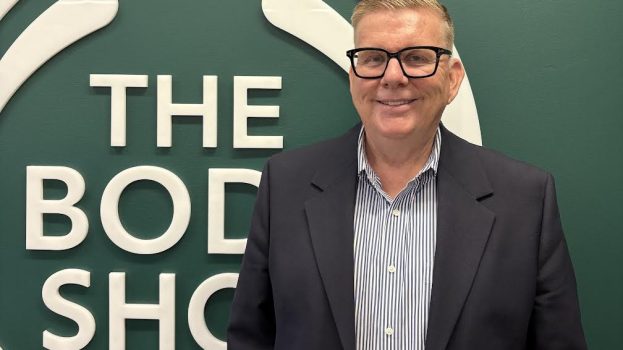With its double umlauts, it’d be easy to mistake Fjällräven for a Scandinavian metal band – an apropos association given that the company (pronounced “fee-y’all raw-ven”) is hoping to make some noise domestically.
The Swedish hiking and adventure company, perhaps best-known for its trendy, popular backpacks sourced from tent materials, entered Canada via Vancouver in 2014 and then later expanded to Banff, Alta., Kitsilano and Victoria, B.C., and Montreal. In 2018, it opened a flagship location on Toronto’s Queen Street West, and just recently added its sixth Canadian location, in Calgary, in May. Like its other Canadian stores, the new Calgary shop offers a full product range including the backpack, as well as technical and eco-friendly clothing and a full line of parkas.
Fjällräven is owned by Switzerland-based Fenix Outdoor International AG, whose global portfolio includes the Tierra, Primus, Hang Wag, Brunton and Royal Robbins brands – all players in outdoor apparel, accessories and equipment. Fjällräven hopes to become “the most sustainable and premium global outdoor brand,” according to Fenix Outdoor’s 2018 annual report, by further developing its product range, brand experiences and sustainability efforts.
But despite growing its North American retail presence over the last year, it continues to face challenges in Canada, where its stores must compete against a wealth of brands including Canada Goose and Patagonia, as well as new American entrant L.L. Bean, opening in Oakville in 2019.
Fjällräven can be found in partner retailers, such as MEC and REI, among “the best large format outdoor chains on the planet,” says Steve Stout, VP Retail for Fjällräven. “That said, we like to open our own stores because we believe that no retail partner can represent or communicate our brand as well as our dedicated stores and staff.”
But getting customers to visit physical retail can be challenging, as “you have to have an extra special reason to call people into your store,” says Brynn Winegard, retail analyst from the Schulich School of Business. “The one apparel category where we see high levels of foot traffic is the luxury goods sector.”
June Cotte, professor of marketing at the Ivey business school, Western University, says Fjällräven is a bit like a Swedish Canada Goose — seen as a luxury aspirational item not necessarily driven by the cultural trend of being outdoors.
Both brands offer expensive parkas and ethical sourcing, she says. But the key difference is that Fjällräven has a greater range of products and emphasizes hiking and sustainability. She likens the relatively inexpensive Kånken backpacks to a Porsche key fob for someone without a Porsche. “You can buy something small like a backpack, without getting into the full line of expensive gear.” Fjällräven products can range from $100 for the aforementioned Kånken backpacks to $250 dollar trekking trousers and $1,000 parkas.
 From a marketing perspective, the company has promoted the new Calgary shop by touting its sustainability initiatives and ethical businesses practices, drawing attention to its “Arctic Fox Initiative” (Fjällräven is Swedish for arctic fox) aimed at funding projects that protect the animal’s habitat.
From a marketing perspective, the company has promoted the new Calgary shop by touting its sustainability initiatives and ethical businesses practices, drawing attention to its “Arctic Fox Initiative” (Fjällräven is Swedish for arctic fox) aimed at funding projects that protect the animal’s habitat.
For the Calgary launch, the brand worked with Toronto PR agency Rock-It Promotions, and plans to continue to drive awareness through digital and social channels. Moreover, it has plans to connect with the Calgary community through its Local Guide store ambassador program, identifying influencers and outdoor enthusiasts to promote the brand through Instagram. The brand hosted 50 members of the local media and social influencers for a product and sustainable brand initiative education.
Its sustainability efforts, but with more of a focus on outdoor activities, was also seen in neighbouring B.C., where it got Vancouver Canucks players to help with the store launch and has been hosting events centred on “plogging” – a portmanteau of the Swedish term, “plocka upp,” or pickup, and “jogging” – that involves picking up trash. In June, Fjällräven is also hosting hiking sessions in Vancouver, which will consist of mobility work and strengthening exercises for the outdoors-inclined.
While Stout says Alberta has been a very important growth area for the brand – after all, nearby Banff National Park is one of the most iconic and popular tourist and hiking locations in the country, attracting four million visitors annually – demand for its products is not limited to the country’s mountainous regions. He says the opening of its Toronto flagship in 2018 came as “Ontario still holds a very dense population of outdoor consumers.”
The start of the Canadian direct distribution through a local subsidiary has not yet paid off, notes Fenix’s year-end report about Fjällräven’s entrance into Canada, “and the growth in the Americas was more driven by the U.S.” Nevertheless, the company sees positive signs in the sales growth of its non-bag products, and it plans to add another seven to 12 stores in North America this year.
The outdoor market in Canada, according to 2019 NPD group data, represents a $2.8 billion-dollar industry domestically, and outdoor apparel and footwear is actually outpacing leisurewear. Outerwear and boots contributed to two-thirds of the segment growth.
























